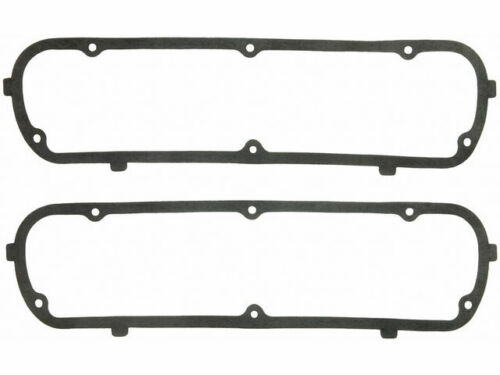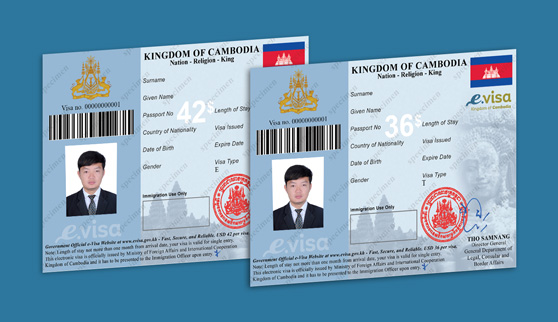
The TK Barina Rocker Cover Gasket is essential in maintaining engine efficiency. It creates a seal between the rocker cover and the cylinder head, preventing oil leaks and optimising engine functionality. Properly installing this gasket helps avoid potential engine problems, thereby extending the vehicle’s lifespan. This component plays a critical role in the overall performance and reliability of the engine.
Required Tools and Materials
Tools and materials are essential for successfully installing a TK- Barina rocker cover gasket. The essential tools required include a ratchet and socket set to remove the bolts securing the rocker cover. A torque wrench is also crucial, as it ensures the bolts are tightened to the manufacturer’s recommended torque specification, preventing over-tightening or under-tightening, which could lead to leaks.
A flathead screwdriver helps pry off the rocker cover, especially if it is stuck due to the old gasket sealant. It is essential to be gentle when using a screwdriver to avoid damaging the cover or surrounding components. A gasket scraper will also be necessary to remove the old gasket and any residual sealant on the rocker cover and engine block. A clean surface is essential to ensure a proper seal with the new gasket.
High-Quality Gasket Sealant
Using high-quality gasket sealant is highly recommended. While many gaskets come with a pre-applied sealant, applying an extra layer around the edges can provide an added layer of security, ensuring a tight seal and preventing leaks. Be sure to choose a sealant that is compatible with your engine’s requirements and designed to withstand high temperatures.
Before installation, it’s important to clean the surfaces thoroughly. An engine degreaser can clean the rocker cover and engine block, removing oil and debris. This ensures the new gasket forms a proper seal, reducing the likelihood of leaks. Once the surfaces are clean, the gasket can be installed, and the bolts can be tightened to the specified torque.
By ensuring all necessary tools and materials are available, the installation of the TK- Barina Rocker Cover Gasket can be done efficiently and effectively, prolonging the engine’s lifespan and preventing future leaks.
Steps for Preparation
Safety is crucial when working on vehicle maintenance. To prevent accidental movement, begin by ensuring the car is parked on a flat, stable surface. Always engage the parking brake. Allow the engine to cool completely to avoid burns or other injuries.
Disconnecting the Battery
Disconnect the negative terminal of the battery to prevent electrical mishaps. This step eliminates the risk of electrical shocks and ensures the safety of the installer and the vehicle’s systems during the process.
Inspecting the Engine Bay
Perform a detailed inspection of the engine bay. Look for any visible leaks, loose components, or other issues that could complicate the installation of the TK- Barina Rocker Cover Gasket. This will help identify potential obstructions early.
Recognizing Obstructions
During the inspection, note any parts or hoses that might interfere with the installation process. Addressing these obstructions before starting ensures smoother execution and prevents mid-process delays.
Preparation and Tool Organization
Gather all necessary tools and the new rocker cover gasket before beginning. Having everything within reach minimizes interruptions and helps maintain focus during the installation.
Starting the Installation
Proceed with the installation with the engine cool, battery disconnected, and obstructions cleared. Following these steps ensures a safe and efficient replacement of the TK- Barina Rocker Cover Gasket, enhancing vehicle performance and longevity.
Taking Off the Old Rocker Cover Gasket
Before beginning the replacement of the rocker cover gasket, it’s essential to clear any components that may obstruct access to the rocker cover. Depending on your vehicle, this could include air filters, hoses, or other engine components. Take care to remove these parts carefully, ensuring you do not damage any delicate components in the process.
Once the area is clear, use a ratchet and socket set to detach the bolts securing the rocker cover. Using the correct socket size is essential to avoid stripping the bolts. As you remove the bolts, keep them organized so you can easily reattach them later. Note that the bolts might not be evenly spaced, so be sure to remember their positions for reassembly.
After the bolts are removed, carefully lift the rocker cover off. The gasket might be slightly stuck to the engine block, so a gentle tap with a rubber mallet or similar tool can help loosen it. Be cautious not to apply excessive force, as this could cause damage to the rocker cover or the surrounding engine parts.
Ensure Fit Correctly
With the rocker cover removed, you can see the old gasket. Gently peel it away, being careful not to damage the mating surfaces of the cover or the engine block. The surfaces should remain smooth and debris-free for the new gasket to fit correctly. Inspect the gasket for any signs of leaks or wear before discarding it.
Follow your local waste disposal regulations to dispose of the old gasket responsibly. Many automotive parts stores offer recycling programs, so consider using these services to dispose of the gasket in an environmentally friendly way.
Following these steps carefully ensures the rocker cover is properly removed, setting the stage for a smooth gasket replacement process.
Cleaning the Holden Barina Rocker Cover Gasket
Proper preparation of engine surfaces is crucial when installing a new gasket, as Holden Barina Rocker Cover Gasket ensures a reliable seal and prevents oil leaks. Following the correct cleaning and preparation steps is key to achieving a successful outcome.
Removing Oil and Grime
Begin by meticulously cleaning the rocker cover and cylinder head surfaces with an engine degreaser. The degreaser effectively breaks down oil and grime, which can compromise the sealing surface. Allow the degreaser to sit briefly before wiping it away with a clean cloth.
Using a Gasket Scraper
Employ a gasket scraper to remove any remaining traces of the old gasket. Work carefully to avoid gouging or damaging the mating surfaces. Persistent remnants of the old gasket can interfere with the seal, leading to potential leaks or improper fitting of the new gasket.
Ensuring Contaminant-Free Surfaces
After scraping, thoroughly inspect the surfaces for any remaining debris or contaminants. Even tiny particles can compromise the seal, so ensure the surfaces are spotless. Wipe the area with a lint-free cloth to catch any fine particles.
Drying the Surfaces Completely
Before installing the new gasket, make sure the surfaces are dehydrated. Moisture can prevent the gasket from adhering correctly, increasing the risk of leaks. Use a dry cloth or allow the area to air dry for a flawless finish.
Achieving a Proper Seal
Clean, dry, and contaminant-free surfaces are essential for a successful gasket installation. Proper preparation ensures the new gasket will create a tight seal, preventing oil leaks and guaranteeing optimal engine performance.
Examining the New Gasket
Before installing a new TK- Barina Rocker Cover Gasket, it is crucial to thoroughly inspect the part to ensure it is free from any visible defects, such as cracks, deformities, or damaged edges. Any imperfections in the gasket can lead to improper sealing, which might result in oil leaks or compromised engine performance. A careful visual inspection allows you to catch these issues early, saving time and costs associated with installation errors or future repairs.
It is also essential to confirm the gasket’s compatibility with the engine. This can be done by verifying the part number and size. Checking that the gasket matches the engine’s specifications ensures it will fit properly, creating an effective seal between the rocker cover and the engine block. Using an incompatible gasket can lead to poor sealing, which may cause oil to leak, increase engine wear, or even cause engine overheating.
Additionally, take the time to inspect the gasket for any manufacturing flaws that could affect its performance. These can include irregularities in shape, uneven thickness, or inconsistencies in material quality. Such defects may not be immediately visible but could still impact the gasket’s ability to form a tight seal.
Fitting the New Rocker Cover Gasket
Before installing a new gasket, thoroughly clean the cylinder head and the corresponding surface of the engine block to remove any debris, old gasket material, or oil residue. This ensures a smooth, contaminant-free surface for the new gasket, allowing for a proper seal.
Once the surfaces are clean, carefully align the new gasket with the bolt holes on the cylinder head. Ensuring that all holes match up properly is essential to avoid misplacement, as an incorrect alignment can result in leaks or a poor seal. Take the time to check the alignment thoroughly before proceeding with the installation.
Depending on the manufacturer’s recommendation, you may need to apply a thin layer of gasket sealant to the gasket or the mating surfaces of the cylinder head and engine block. The sealant can provide extra protection against leaks and help ensure a secure, tight fit. Be careful not to use too much sealant, which can lead to excess material seeping into the engine and causing issues.
Reassembling Engine Parts
Position the rocker cover over the cylinder head with the new gasket adequately aligned and in place. Carefully insert and hand-tighten the bolts, ensuring each one is aligned correctly to avoid cross-threading. Once all bolts are hand-tightened, use a torque wrench to secure them to the manufacturer’s specified torque settings, ensuring an even and secure fit.
Reattach any engine components removed during disassembly, ensuring all connections and fittings are secure. This precise reassembly will help maintain the integrity of the newly installed TK -Barina Rocker Cover Gasket, preventing any future oil leaks or engine issues.
Final Inspections and Testing
Conduct a thorough inspection to verify all connections are secure, and there are no leaks. Reconnect the battery and start the engine, allowing it to run briefly while monitoring for oil seepage around the rocker cover. Ensure the engine runs smoothly and listen for any unusual noises that could indicate improper installation.
Check the torque on all bolts once more to confirm they are tightened to the manufacturer’s specifications. Additionally, inspect surrounding components to ensure they are reattached correctly and are not obstructing any part of the engine. This meticulous approach will help maintain the integrity of the newly installed TK- Barina Rocker Cover Gasket.
Common Mistakes During Installation
Several common mistakes can occur during the installation of a TK- Barina Rocker Cover Gasket.
- One frequent error is over-tightening the bolts, which can damage the gasket and the mating surfaces.
- Another mistake is using an incompatible gasket type, leading to improper sealing and potential leaks.
- Refraining from thoroughly cleaning the rocker cover and cylinder head surfaces before fitting the new gasket can also result in a poor seal.
- Additionally, misaligning the gasket or not applying the recommended gasket sealant can compromise the effectiveness of the installation.
- If problems arise, it is essential to revisit each step of the process to identify and correct any errors.
Maintenance Advice for Longevity
Routine TK- Barina Rocker Cover Gasket inspections can identify early signs of wear or damage. Clean any accumulated grime and check for oil seepage around the gasket area. Replace the gasket when the first indication of deterioration is detected to prevent more serious engine issues.
Monitoring engine performance and promptly addressing any unusual noises will help maintain the basket’s effectiveness. Regular oil changes and keeping the engine bay clean also contribute to the gasket’s longevity. These practices ensure the engine remains in optimal condition, safeguarding against potential complications.
Advantages
Correct installation of the TK- Barina Rocker Cover Gasket is crucial for preventing oil leaks and ensuring the engine operates efficiently. This process aids in maintaining the engine’s performance and longevity. An adequately fitted gasket provides a secure seal, thereby reducing the likelihood of potential engine problems.
Adhering to the outlined steps and maintenance advice helps achieve a reliable and efficient engine, ultimately enhancing the vehicle’s overall reliability and performance. By following this guide, one can confidently address any issues related to the rocker cover gasket, ensuring optimal functionality.
Conclusion
Replacing a faulty tk Barina rocker cover gasket is a relatively straightforward task that can be performed by DIY enthusiasts with basic mechanical skills. By following the steps outlined in this guide and using the appropriate tools, you can effectively address oil leaks and restore the engine’s performance. However, if you need clarification on any step or encounter difficulties, it’s advisable to consult a qualified mechanic.
FAQs
How often should I replace the rocker cover gasket on my TK Barina?
While there’s no specific timeline for replacing the rocker cover gasket, it’s generally recommended that you inspect it during regular engine maintenance checks. If you notice any signs of oil leakage, damage, or hardening, it’s advisable to replace it promptly.
Can I use a generic gasket instead of an OEM part?
While it’s possible to use a generic gasket, it’s generally recommended to use an OEM (Original Equipment Manufacturer) part to ensure optimal fit and durability. OEM gaskets are specifically designed for your vehicle and are more likely to provide a reliable seal.
What tools do I need to replace the tk Barina rocker cover gasket?
To replace the tk Barina rocker cover gasket, you’ll need essential tools such as screwdrivers, wrenches, and a gasket scraper. You may also need a torque wrench to tighten the bolts to the correct specifications. Additionally, it’s recommended that you have a clean workspace and appropriate cleaning supplies to remove any oil or debris.
| Related Business Listings |
| Contact Directory |
| Local Business Profiles |





